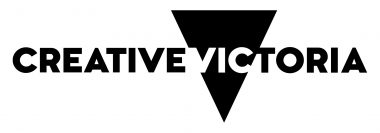About the Creative
Equity Toolkit
The Creative Equity Toolkit provides an action-oriented approach to increasing cultural and racial equity and diversity in the arts and creative sectors.
ACKNOWLEDGEMENT OF COUNTRY
We acknowledge the First Peoples of the lands now called Australia where this website was created, and recognise that sovereignty has never been ceded. We extend our Acknowledgement of Country to all First Peoples around the world. We pay respects to Elders past and present and recognise the continuing connection of First Peoples to the land and waters and their ongoing custodianship and care for their lands.
We are guided in all our work by First Peoples’ leadership, recognising the immense value that First Nations artists and cultural workers create within the arts and cultural landscape.
This website was created by Diversity Arts Australia in partnership with the British Council Australia. Diversity Arts’ national office in Parramatta stands on the unceded lands of the Burramattagal of the Darug nation. The British Council national office in Edgecliff stands on the lands of the Gadigal people of the Eora nation. Always was, always will be. Aboriginal land.
ABOUT THE CREATIVE EQUITY TOOLKIT
This site features dozens of implementable actions, from simple to complex, along with hundreds of links to tools and resources developed around the world to help put these actions into practice.
Internationally there are remarkable differences in how arts and cultural organisations approach the question of equity, diversity and inclusion. This site brings together ideas, research and best practice from around the world into one place. We’ve extracted the solutions and recommendations from research and case studies, and provided short introductions to key concepts to help inform debate.
SCOPE
This website provides resources for improving racial equity in the creative sector. Diversity Arts Australia focuses on culturally and racially marginalised settler communities in the arts and creative industries. Our partners, Garuwa, have provided First Nations-related content, including case studies of Indigenous arts leadership in Australia, and reviewed site content from a First Nations perspective.
While we are connected by our analysis of racism and anti-racism, the experience of current and historical colonisation, dispossession, abuse and injustice of First Nations people cannot be conflated with settler migrant experiences as part of a narrative of ‘multiculturalism’. For migrant communities, as well as white communities, working with Indigenous communities and cultural material requires very specific frameworks, protocols and standards that this website does not comprehensively address.
There are many excellent resources for working in this space. Good starting points for people working in the arts and screen industries are Creative Australia and Screen Australia. Check out our case studies, and our partners at Creative Victoria and Create NSW also have specific resources, as do arts and screen authorities in other Australian states and territories.
When we use the term ‘cultural diversity’ throughout this site, we acknowledge that this language is contested. ‘Diversity’ is not the term preferred by everyone, and also encompasses far more than cultural diversity. While Diversity Arts’ focus is on ethnocultural and migrant diversity, we work intersectionally and in solidarity with many communities, including First Nations, people with disability, deaf communities, people with caring responsibilities, queer communities, regional communities and people of diverse ages, genders, religions and socio-economic statuses.
TAKE A QUICK TOUR
FIND OUT MORE
- We focus on racial equity.
The focus of Diversity Arts Australia and the first iterations of this website were on ethno-cultural, migrant, refugee and minority ethnic racial equity. Through a partnership with First Nations-led company Garuwa, the website has been reviewed, including providing recommendations for changes and collecting First Nations content for the Toolkit. Additionally, 12 First Nations case studies of leading practice have been produced by Garuwa for the Creative Equity Toolkit. This work is ongoing. - We focus on resources for organisations.
Many other Diversity Arts and BC projects are aimed at supporting individual artists and creatives, but the audience for this project is arts, screen and cultural organisations, funding bodies, government bodies, policymakers and philanthropic organisations. - We only include resources available in English.
Due to lack of resources to research and translate across languages. Unfortunately at the moment this website is only available in English. - We include resources from around the world.
As a joint project of the British Council and Diversity Arts Australia, our coverage is global. - We take a practical, action-oriented approach
This toolkit is a practical guide that links to existing resources for organisations that want to take action on equity. It does not seek to include all available literature, nor to identify or fill gaps in the literature, but instead to curate a selection of leading practical resources.
Accessibility Consultant: Shravan Reddi
Thanks to: Colin Ho (Stage 2 Project Producer), Rupert Daniel, Simon Steele, Dan Gibney, Amanda Brizzi, Glaiza Perez, Dr Paula Abood, Dr Görkem Acaroğlu, Eugene Hoh, Professor Karen Soldatic, Shalini Perera, Caitlin Vaughan, Reem Al-Gharabally, Professor James Arvanitakis, Gerald Lidstone, Kevin Bathman, Joanne Cooper, Dr Alexia Derbas.
ABOUT DIVERSITY ARTS AUSTRALIA
Diversity Arts Australia is Australia’s key organisation for ethno-cultural and migrant racial equity in the arts, cultural and creative industries.
ABOUT THE BRITISH COUNCIL
The British Council is the UK’s international organisation for cultural relations and educational opportunities, on the ground in six continents and over 100 countries, bringing international opportunity to life, every day.





